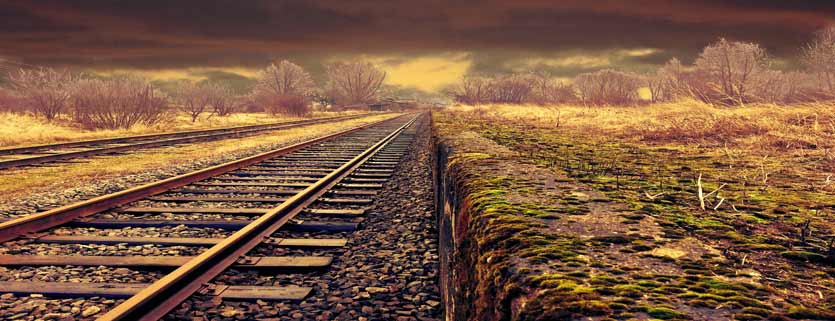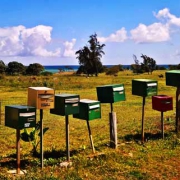Gas Rails – The next level of LNG distribution
/0 Comments/in Long Articles/by Rudolf HuberWho invented railways? Easy, you say. It was the Brits when the Industrial Revolution started to get into high gear. And it revolutionized land transport.
For the first time, moving big and heavy objects was possible as a part of normal life. And without employing extraordinary means.
Right?
Wrong. The idea of a track that makes transport of very heavy goods a workable idea is more than 2500 years old. That was more than 2000 years before the first iron horse.
Introducing: the Diolkos.
Can we trust historical archives and archeology? If yes, this 6km trackway crossing the isthmus of Corinth was the first true railway.
Yes, we are in ancient Greece. A look at the map will tell you that this part of the world features a rather wild and dangerous coastline.
In the south, the almost island of the Pellepones juts out into the Mediterranean. A wild sea teeming with pirates. It is making traveling from the Adriatic Sea to the Aegean islands a long and perilous endeavor.
The Pellepones connects to mainland Greece by the Isthmus of Corinth. Whoever was able to cross it would have an enormous advantage over anyone else – in war and in commerce.
The Diolkos’ purpose was to drag entire ships over the Isthmus. It was a plastered way with grooves cut into the stones that provided a smooth surface to roll on for large wheels. Carts drawn by beasts of burden helped drag the ships.
Why is that important information on an energy blog you ask?
The ancient Greeks already knew that to transport something big and heavy, you need smooth rolling. As smooth as possible. Any bump in the track will produce friction. And this is always a bad thing when you transport big and heavy stuff.
Or when you transport a lot of stuff even. No matter how small individual items may be.
The Diolkos did not provide for the unloading of the ships, transport of the cargo over the Isthmus, and reloading on another ship. They dragged the entire ship over as they figured that it was cheaper to do so.
Let’s fast forward more than 2 and a half millennia. Today, railways are a bit of an oddity. They had their heyday during the 19th century, before the triumph of the automobile.
Before petroleum, coal was the fuel of choice. Automobiles were not large enough to carry enough fuel. The big steam engines those coals powered fit on big things. Not small cars.
And here we get to LNG. LNG is still an oddity in the transport world. Even more so in the railway business. But it’s not unheard of. LNG has been used as a railway fuel for decades now albeit mainly for exotic laboratory runs. It never made it into the mainstream.
This is changing now. Some countries walk on new paths when combining LNG with rail.
Russia tries to use more gas as a fuel in transport and builds new LNG-fueled locomotives. As a little side benefit, they don’t need to heat the fuel anymore in the far north as they have to with diesel. Even the very coldest day in Siberia would feel quite balmy to LNG.
Countries as diverse as India and Spain experiment with both, LNG as a fuel and LNG transport by rail. As so very often, the US once again is the tip of the spear in a sense.
Copious shale gas and a massive overproduction of methane drive a powerful push to use LNG. This LNG is best produced at central locations and distributed to many parts of the country. And don’t forget to the south towards Mexico which is a big market in its own right.
The volumes possible are astonishing. A single Chart LNG carriage holds about 100m3 of LNG. A super-long block train with 100 carriages thus holds 10.000m3 of LNG. This means that one such block train per day will get you more than 1,5 million tons of LNG or 2 bcm of gas per year. We are getting into pipeline territory. Large cities need this amount of gas.
Today, it’s difficult to build pipelines because of activists and populist politicians. LNG trains will provide fast relief when things come to a head. This is what will happen when activists block normal pipeline development for long.
Yes, New Yorkers and Californians might be the first recipients of such LNG trains. One day they will want efficiency and reasonable economics they give up now back in their lives.
But the most exciting territory might be Europe. I know I am counterintuitive. Europe is hardly innovative in any sense. Except when it comes to implementing pie-in-the-sky energy solutions. But it’s for exactly this reason that LNG trains might become a feature here.
It’s as hard to build a pipeline in Europe as it is in the US. The compliance and administrative long-tail kills projects long before they can get underway.
But Europe also has a very dense network of railway tracks. Many of those tracks hail back to times when railways were a much more important feature of everyday life. Those tracks often reach all the remotest corners of the continent.
In some regions such as the Balkans, gas pipelines are scarce. Gasifying the region is hard as new infrastructure is hard to build and costs a lot of cash upfront. Investments that often cannot be backed up by public money.
But they all have a pretty dense rail network. Sending LNG block trains there from coastal terminals would be a way to connect many island communities and cities to the gas world.
In gas terms, if you are not connected to the grid you are an island community.
But even cities that are well integrated into the continental gas grid might get interested in LNG trains. Cities that use a lot of gas for domestic customers have to deal with violent consumption swings.
The seasonal swing is the more famous one. In Europe, most cities use more gas in the winter than in the summer. Heating is the culprit.
Depleted fields are used as underground storage. In low season, gas from long-term deliveries gets injected into storage. Those volumes can be given back to the grid in winter in addition to the delivered volumes. This is a slow process but this is also a very long swing so that’s how the cycles match.
It’s much harder to deal with are hourly swings. For example, mornings usually present very large peaks in gas use. People wake up, make breakfast, and take a shower pretty much all at the same time.
Utilities prepare for those peaks with some countermeasures. In some cases, the peak is so strong that a fast short-term buffer must be used. This is often a very high-pressure tube that gets filled with gas overnight. This gas is then released into the grid when needed.
This is very costly.
Another measure is liquefying gas into a holding tank to regasify when needed. Again, not a cheap measure. But the most expensive part of it is the liquefaction part.
Let that sink in for a moment. Some countries receive LNG in coastal terminals. They regasify this LNG and put it into the gas grid just to reliquefy again when needed for the short-term buffer. How wasteful.
Would it not be easier and cheaper to keep the LNG as a liquid and bring it to wherever needed? Sure it would – if only transport would not be so expensive.
Most onshore transport of LNG happens with truck trailers in Europe. One such truck can transport about 45 m3 of LNG at a time. That’s nice for fueling vehicles, but a city’s needs are much bigger. And truck transport is expensive.
Rail would change this. It would be a true rolling pipeline.
How would that work? Each block train is a lump of gas. Each carriage in each block is a sub-lump of gas.
A user with regasification capacity in place will model his demand peaks for a certain period. He finds that he needs a certain amount of LNG to shave his peaks every weekday for some time. A recurring pattern of sorts. To cut his LNG storage needs he could direct carriage delivery to drop them in at certain intervals.
He would hold a certain safety volume of LNG in a fixed tank as there must be the capacity to play with it if things go wrong. But the right dance of carriages would keep this tank small and tanks are expensive. Besides, boil-off in small tanks is higher than in big ones.
If the customer anticipates an extraordinary spike in consumption he could try to line up more carriages for faster delivery. He could pack the line.
Those are games of course and I would not recommend anyone to start on those sharper models. But once one gets cozy with the fundamentals, more exotic things could be contemplated.
Imagine this happening on a network basis. Every single carriage has instant communication capability. A SIM card would tie it into the mobile phone network allowing for “just in time” monitoring and scenario simulation. All consumption points, their consumption patterns, and all rolling stock would be re-arranged by intelligent algorithms ad infinitum.
The European rail network could be the continent’s clean energy internet.













Leave a Reply
Want to join the discussion?Feel free to contribute!